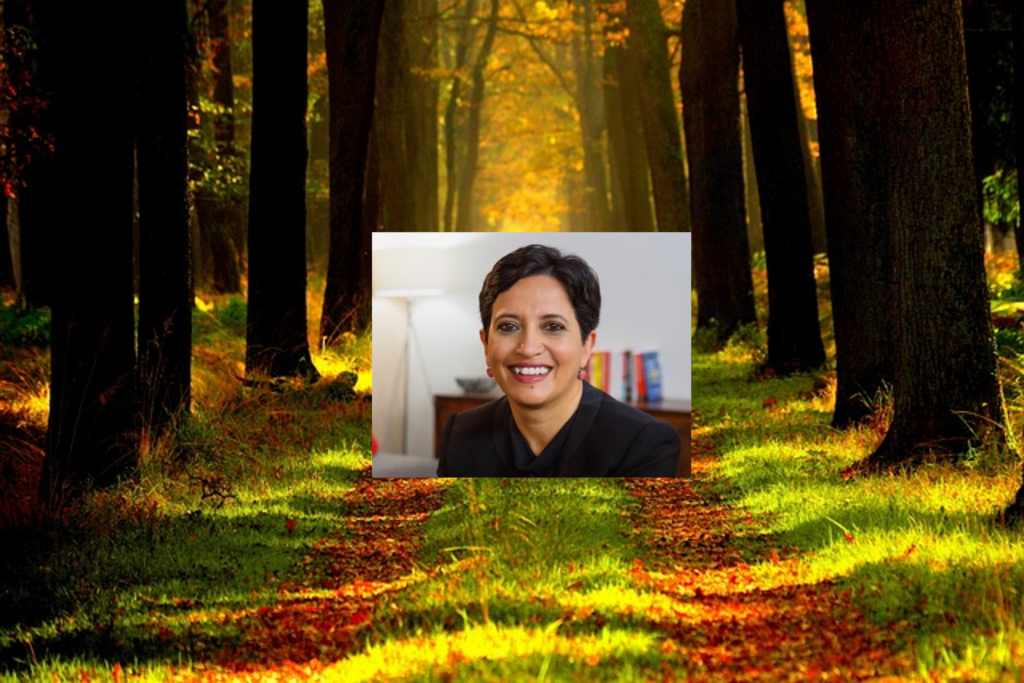Entrepreneur Journeys
The Startup Velocity Question: What Hinders Acceleration in VC Funded Companies?

I have been running 1Mby1M since 2010. I find myself saying to entrepreneurs ad nauseam that VCs want to invest in startups that can go from zero to $100 million in revenue in 5 to 7 years.
Startups that do not have what it takes to achieve velocity should not be venture funded.
Experienced VCs, over time, have developed heuristics to gauge what constitutes a high growth venture investment thesis.
>>>1Mby1M Udemy Courses with Sramana Mitra: Bootstrapping

Over the course of two years, we have released over 70 courses on Udemy with the aim to democratize entrepreneurship education at scale globally. This series of posts aims to help you find the one you need easily and provide you with discount coupons.
>>>Bootstrapped First, Raise Money Later: Manick Bhan, CEO of Rukkus (Part 1)
If you haven’t already, please study our Bootstrapping Course and Investor Introductions page.
“My journey was as unexceptional as you can imagine,” says Manick, in describing how he got to $1 million Annual Revenue Rate in transactions before raising financing. Read on for the whole story.
Sramana Mitra: Let’s start by going back to your very beginnings. I want to hear about where you were born, raised, and in what kind of background.
Manick Bhan: Both my parents come from Kashmir. They raised me in Baltimore, Maryland. That’s where I was born. I’ve grown up mostly in the United States. In the very early days, I liked to take things apart. When I was nine, they bought me this bicycle. The first thing I did was I opened the whole thing up. I took out all the screws and basically dismantled the beautiful bike. They were a little horrified about it because it was a birthday present. This has been pretty constant in my life. I like to take things apart and figure out how they work. >>>
Featured Videos
Can 1M/1M Help Me Raise Money?
How Does 1M/1M Democratize Entrepreneurship Education?
How Does 1M/1M Democratize Management Consulting?
When Is The Right Time To Join 1M/1M?
Can 1M/1M Help Me With Business Development?
Can 1M/1M Help Me With Market Sizing?
Can 1M/1M Help Me Validate My Product?
Will I Have Private 1-on-1 Sessions In 1M/1M?
How Does 1M/1M Help Entrepreneurs Connect With Silicon Valley?
Mentoring or Consulting?
Why Does 1M/1M Charge $1000 a Year?
Why Does 1M/1M Partner With Local Organizations?
Why Don\’t Mentoring Networks Work?
Why Is It Important To Study With 1M/1M Now?
Dan Stewart Story
Vikrant Mathur Story
A Serial Entrepreneur’s Awesome Journey from Austin, Texas: Jason Cohen, CTO of WP Engine (Part 1)
If you haven’t already, please study our Bootstrapping Course and Investor Introductions page.
Jason has done three bootstrapped startups, sold two of those, and then bootstrapped a fourth one to heavy duty venture financing.
This is a great interview with a pro who knows what he is doing at many levels.
Sramana Mitra: Let’s start at the very beginning of your journey. Where are you from? Where were you born, raised and in what kind of background?
Jason Cohen: I was born and raised in Austin, Texas. Austin, of course, is a popular place to be. It’s about 20 million people in the surrounding area. When I was born, it was 10 times smaller. I had jobs in high school. I was an intern at Aerospace writing code in their R&D department. I worked throughout college at local startups at Austin. Right after that, I started a consulting company. The consulting company and the next three companies were all bootstrapped and got over $1 million in revenue. Two of them were sold. For about 20 years, I’ve been doing startups and never worked at a huge company. >>>
Bootstrapping Using Services from Ireland: Shane Evans, CEO of ScrapingHub (Part 1)
If you haven’t already, please study our Bootstrapping Course and Investor Introductions page.
Shane has built a 140-people virtual team-based business from Ireland. Very interesting view into a different part of the world.
Sramana Mitra: Let’s start at the very beginning of your journey. Where are you from? Where were you born, raised, and in what kind of background?
Shane Evans: I was actually born in the UK. Both of my parents worked at Heathrow. My father is British but my mother was Irish. I think their involvement and love for travel had an impact on me. I came to Ireland when I was two years old and that’s where I grew up.
Sramana Mitra: What was your educational process like? >>>
Building a SaaS Company with Operational Discipline: Betterworks CEO Kris Duggan (Part 1)
If you haven’t already, please study our Bootstrapping Course and Investor Introductions page.
Kleiner invested $15 million in Bettelworks on a concept. It’s an unusual financing that only experienced entrepreneurs can pull off. Read how Kris is building the company.
Sramana Mitra: Let’s start at the very beginning of your journey. Where are you from? Where were you born, raised, and in what kind of background?
Kris Duggan: I was born in Australia. My parents are Australian. When I was five, we moved to Texas because my dad had an opportunity to relocate with the chemical company that he worked for. I grew up in Houston and actually went back to Australia for a year but then, ultimately, moved to California for most of high school and college. That was in Southern California. About 15 years ago, I moved up to Northern California. >>>
Bootstrapping to $10 Million from Helsinki, Finland: Mikko Valimaki, CEO of Tuxera (Part 1)
If you haven’t already, please study our Bootstrapping Course and Investor Introductions page.
In our effort to bring you stories from the global startup ecosystem, here we introduce you to a wonderful success story from Finland.
Sramana Mitra: Let’s start at the very beginning of your journey. Where are you from? Where were you born, raised, and in what kind of circumstances?
Mikko Valimaki: I’m a 39-year-old guy from Finland. I did my schooling in Finland. I did, however, study in Berkeley in the United States and was exposed to the American culture. I’ve never worked for any big company. I always started my own stuff. I had already developed my own computer games back in the 1990s while at high school. I tried to sell those.
After university, I tried to found my own company. I tried several things. We had one database startup back in 2001. The product is still selling but that broke up perhaps because of personal issues with the other founders. That was one of my first success stories. There were some other companies as >>>
From High School Drop Out to $20M in Revenue: Brad Lea’s Journey with Lightspeed VT (Part 1)
Brad knows how to sell. Read how he turned that skill in to a $20M revenue business with very little formal education.
Sramana Mitra: Let’s start at the very beginning of your journey. Where are you from? Where were you born, raised, and in what kind of background?
Brad Lea: I was born in Cottage Grove, Oregon in about 1969. My journey began right there.
Sramana Mitra: Did you grow up in that community?
Brad Lea: Yes, I grew up there until I was 14 years old.
Sramana Mitra: What did you do after that? Where did you move to and how did the journey evolve? >>>
Bootstrapping from New Zealand, Scaling in America: Jason Westland, CEO of ProjectManager.com (Part 1)
If you haven’t already, please study our Bootstrapping Course and Investor Introductions page.
I have always said that you need to bootstrap your way to validation and traction. Jason did just that, and has built a robust company from New Zealand. Read on, it’s a fabulous story.
Sramana Mitra: Let’s start at the very beginning of your journey. Where are you from? Where were you born, raised, and in what kind of background?
Jason Westland: That’s way back in time than I expected. I’m from New Zealand in the Southern Alps. My first job was managing a project of 25 people. I was 22 out of university. I was in project management until around 15 years ago when I became the General Manager of a software company that grew fast. I was inspired, based on reporting to a Board that I learned a lot from, to start my own business. This is the third business that I’ve started. >>>
Capital Efficient Entrepreneurship: Janet Kosloff, CEO of InCrowd (Part 1)
If you haven’t already, please study our Bootstrapping Course and Investor Introductions page.
You know I don’t buy into the men saying that there’s a bias against women entrepreneurs in the industry. Janet doesn’t either. Here’s an opportunity to learn from her success in building solid revenues, and a profitable business.
Sramana Mitra: Let’s start at the very beginning of your story. Where are you from? Where were you born, raised, and in what kind of background?
Janet Kosloff: I was born and raised on Long Island in New York. My father owned a diner in Queens. He was from Brooklyn. My mother was from a small town in Central Pennsylvania. I had a fairly typical upbringing. I went to college at the State University of New York and I studied Nursing. I started my career as a nurse not necessarily because I had a passion for nursing. It was more so because I wasn’t quite sure what I wanted to do with my life. My family guided me into that career for the reason that I had an affinity for science. >>>
Building a Robust Business in Australia: Investorist CEO Jon Ellis (Part 1)
If you haven’t already, please study our Bootstrapping Course and Investor Introductions page.
Jon has side-stepped venture capital, and raised a significant funding from his customers. He hopes to take the company public in Australia once the company gets to about $50 million in revenue.
Sramana Mitra: Let’s start at the very beginning of your journey. Where are you from? Were were you born, raised, and in what kind of background?
Jon Ellis: I grew up in a small town in Australia on the border of New South Wales and Victoria. It’s got a population of about 40,000 people. My father is a mechanic and has owned his own business for many years. My mother is a teacher.
Sramana Mitra: What did you do for education? >>>
Bootstrapping to $18 Million: Vlad Friedman, CEO of Edge Hosting (Part 1)
If you haven’t already, please study our Bootstrapping Course and Investor Introductions page.
Vlad has built his business using only bank financing, and has aspirations of growing it to $50 million. Read how he has done it, including about on-dilutive financing mechanisms.
Sramana Mitra: Let’s start at the very beginning of your journey. Where are you from? Where were you born, raised, and in what kind of background?
Vlad Friedman: I was originally born in Ukraine back in 1973. In 1979, my family decided to immigrate to the United States. I came to Baltimore, Maryland at the age of six from Kiev. My family and I have lived here ever since.
Sramana Mitra: What about education? >>>
